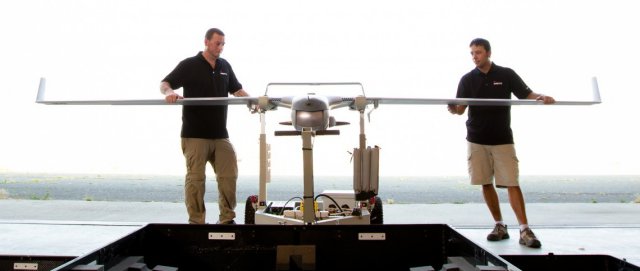 Insitu has announced the successful first flight of Integrator unmanned aircraft system (UAS) Block 2, the latest technology release of the system.
Insitu has announced the successful first flight of Integrator unmanned aircraft system (UAS) Block 2, the latest technology release of the system.
The nearly two-hour flight occurred at the company’s flight test range in eastern Oregon and was conducted using Insitu’s Common Open-mission Management Command and Control (ICOMC2) ground control station. ICOMC2 enables flight of multiple heterogeneous UAS and enables U.S. and NATO member nations to jointly support military operations through a STANAG 4586 compliant system. The flight completed with the current Mark 4 Launcher and SkyHook recovery systems that support expeditionary missions and rapid troop movement.
“We are very pleased with the successful first flight and honored to provide enhanced capabilities for our customers,” said Insitu Senior Vice President of Integrator Programs Ryan Hartman . “Insitu prides itself on continued innovation to ensure that our customers have the latest and greatest technologies available on Insitu UAS.”
This technology configuration offers a suite of upgrades for superior intelligence, surveillance and reconnaissance missions. Integrator Block 2 allows customers to expand operations with an extended upward temperature limit of 120 degrees Fahrenheit. Integrator Block 2 also implements multiple system reliability improvements, including the option to power with either JP8 or JP5 fuel. An improved sensor turret, which includes the latest mid-wave infrared sensor with onboard image stabilization, helps imagery analysts see objects of interest more clearly during day and night missions.
Insitu Inc., located in Bingen, Wash., is a wholly owned subsidiary of The Boeing Company. Insitu designs, develops and manufactures UAS and provides associated services for commercial, civil and defense applications. With a small footprint and expeditionary focus for both land and sea operations, the company’s family of UAS solutions and global mission support serves the needs of worldwide customers. To date, these systems have accumulated more than 679,000 combat flight hours and 75,000 sorties.
Source: Press Release
